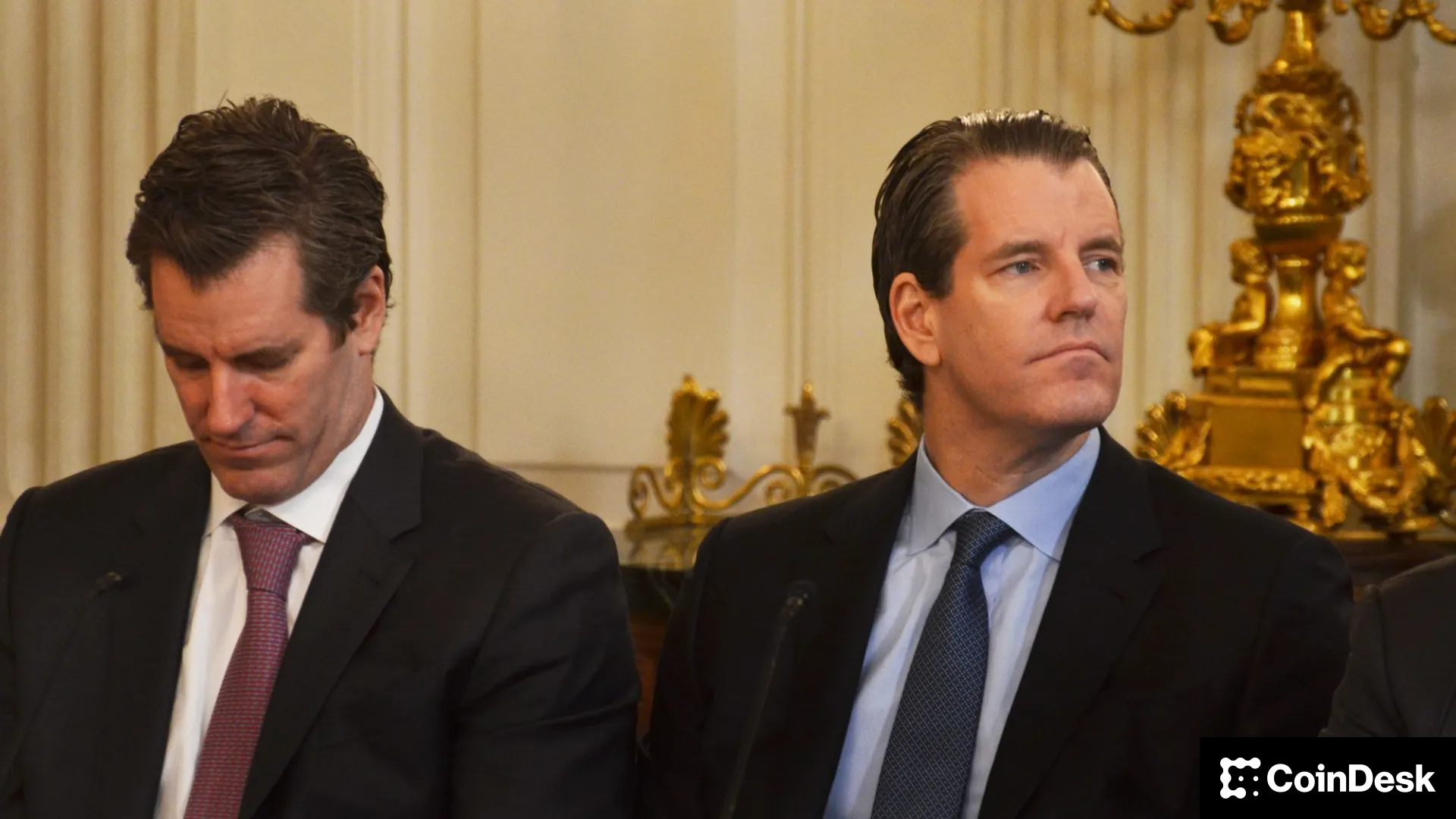Uncategorized
Can the Real Cypherpunks Please Stand Up?

Am I the only one feeling a growing sense of cognitive dissonance in crypto right now?
The crypto industry has always had revolutionary roots. It emerged in 2008 with the Bitcoin whitepaper, a direct response to the financial crisis that decimated livelihoods while protecting a systemically flawed, corrupt banking system. Bitcoin wasn’t just a technical innovation—it was a political and ideological statement. A signal that builders and thinkers were ready to challenge the status quo with tools, not just words.
As someone who’s worked in crypto for years, I should be celebrating. Today, decentralized technologies are no longer on the fringe. Fintechs are adopting stablecoins. Bitcoin ETFs are trading on traditional exchanges. The average person has heard of blockchain. From Capitol Hill to Davos, crypto is no longer being laughed out of the room.
But despite this surface-level “legitimacy,” I can’t help but feel that something essential is lost. The ethos of crypto—the cypherpunk values that got us here—is being diluted, co-opted, and in some cases, directly betrayed.
The Cypherpunk movement’s core belief is that technology can and should be used to rebalance power—away from overreaching governments and monopolistic corporations, and toward individuals. Peer-to-peer networks, end-to-end encryption, censorship-resistant platforms—these aren’t buzzwords; they’re commitments to improve our society.
Stripe acquiring crypto infrastructure startups? Great, but it doesn’t create legitimacy in the crypto industry. That’s a survival move by big fintech to stay relevant and improve their product offering. Circle going public is a corporate milestone, not a validation of crypto’s principles. A Bitcoin ETF may bring liquidity, but it doesn’t bring ideological alignment.
These fintech brands aren’t leading a movement—they’re reacting to it. They’re trying to keep pace with the crypto-native upstarts that are quickly rendering their legacy models obsolete.
Let’s not confuse acquisition with validation. Just because the suits are now interested in the tools we’ve built doesn’t mean they understand, respect, or intend to preserve the reasons those tools exist.
Crypto wasn’t supposed to be another tool in the hands of the state. It is supposed to be the counterweight.
So it’s understandable that the recent uptick in political engagement and clearer regulatory frameworks—like the GENIUS Act —feels like progress. Applications like Coinbase and Polymarket are gaining household recognition. President Biden’s successor has even extended an olive branch to the industry.
But somewhere along the way, many of us seem to have lost the plot.
A glaring example? Coinbase’s recent sponsorship of a military parade affiliated with President Trump.
This isn’t a partisan critique. It’s a principled one. Coinbase’s mission statement emphasizes that political causes are a “distraction from our mission.” Yet, in practice, the company has repeatedly aligned itself with political events—from sponsoring presidential inauguration funds to courting political favor with expedited hiring of ex-DOGE staffers.
CEO Brian Armstrong’s recent solicitation of former DOGE employees is quite poignant: “If you are looking for your next mission after serving your country, consider helping create a more efficient financial system for the world at Coinbase.”
That framing—tying Coinbase’s mission to the state—epitomizes the creeping fusion between crypto’s stewards and the very power structures we were meant to counterbalance.
Yes, Coinbase is a publicly-traded company. Yes, it operates in a jurisdiction governed by laws and politics. But being compliant does not mean being co-opted. Sponsoring political events, aligning with political figures, and turning a profit from proximity to power undermines the ethical foundation of decentralized technology.
And Coinbase is not alone. Crypto-funded super PACs are pouring money into elections at every level. Ripple is now a lobbying juggernaut in D.C. We’re still reckoning with the staggering corruption that was FTX—where political donations and influence-peddling were tools of manipulation, not participation.
This is not a slippery slope. We’re already sliding.
Cypherpunkism is more than an aesthetic or an ideology. It’s a commitment to building systems that make centralized power obsolete—not tolerated or negotiated with, but irrelevant. It’s about building tools that empower individuals, preserve privacy, and promote a more open and resilient society.
Crypto founders, investors, and institutions need to revisit these roots. Blockchain’s purpose isn’t to replicate traditional systems with shinier branding at politicized military gatherings—it’s to fundamentally alter how those systems work. To create a future where financial freedom, privacy, and open access are not privileges, but defaults.
Yes, we must engage with regulators. Yes, we must work within legal frameworks. But that is a far cry from becoming their cheerleaders. There’s a difference between navigating the system and being consumed by it. There’s a difference between playing the game and forgetting why you joined it in the first place.
We owe it to the movement—and to ourselves—to remember why crypto exists. Not to appease governments, but to hold them accountable. Not to win political favor, but to render such favor unnecessary. Not to build brands, but to build freedom.
The real cypherpunks are still out there. But it’s time we make our voices heard again.
Business
Crypto Trading Firm Keyrock Buys Luxembourg’s Turing Capital in Asset Management Push

Crypto trading firm Keyrock said it’s expanding into asset and wealth management by acquiring Turing Capital, a Luxembourg-registered alternative investment fund manager.
The deal, announced on Tuesday, marks the launch of Keyrock’s Asset and Wealth Management division, a new business unit dedicated to institutional clients and private investors.
Keyrock, founded in Brussels, Belgium and best known for its work in market making, options and OTC trading, said it will fold Turing Capital’s investment strategies and Luxembourg fund management structure into its wider platform. The division will be led by Turing Capital co-founder Jorge Schnura, who joins Keyrock’s executive committee as president of the unit.
The company said the expansion will allow it to provide services across the full lifecycle of digital assets, from liquidity provision to long-term investment strategies. «In the near future, all assets will live onchain,» Schnura said, noting that the merger positions the group to capture opportunities as traditional financial products migrate to blockchain rails.
Keyrock has also applied for regulatory approval under the EU’s crypto framework MiCA through a filing with Liechtenstein’s financial regulator. If approved, the firm plans to offer portfolio management and advisory services, aiming to compete directly with traditional asset managers as well as crypto-native players.
«Today’s launch sets the stage for our longer-term ambition: bringing asset management on-chain in a way that truly meets institutional standards,» Keyrock CSO Juan David Mendieta said in a statement.
Read more: Stablecoin Payments Projected to Top $1T Annually by 2030, Market Maker Keyrock Says
Business
Crypto Trading Firm Keyrock Buys Luxembourg’s Turing Capital in Asset Management Push

Crypto trading firm Keyrock said it’s expanding into asset and wealth management by acquiring Turing Capital, a Luxembourg-registered alternative investment fund manager.
The deal, announced on Tuesday, marks the launch of Keyrock’s Asset and Wealth Management division, a new business unit dedicated to institutional clients and private investors.
Keyrock, founded in Brussels, Belgium and best known for its work in market making, options and OTC trading, said it will fold Turing Capital’s investment strategies and Luxembourg fund management structure into its wider platform. The division will be led by Turing Capital co-founder Jorge Schnura, who joins Keyrock’s executive committee as president of the unit.
The company said the expansion will allow it to provide services across the full lifecycle of digital assets, from liquidity provision to long-term investment strategies. «In the near future, all assets will live onchain,» Schnura said, noting that the merger positions the group to capture opportunities as traditional financial products migrate to blockchain rails.
Keyrock has also applied for regulatory approval under the EU’s crypto framework MiCA through a filing with Liechtenstein’s financial regulator. If approved, the firm plans to offer portfolio management and advisory services, aiming to compete directly with traditional asset managers as well as crypto-native players.
«Today’s launch sets the stage for our longer-term ambition: bringing asset management on-chain in a way that truly meets institutional standards,» Keyrock CSO Juan David Mendieta said in a statement.
Read more: Stablecoin Payments Projected to Top $1T Annually by 2030, Market Maker Keyrock Says
Business
Gemini Shares Slide 6%, Extending Post-IPO Slump to 24%

Gemini Space Station (GEMI), the crypto exchange founded by Cameron and Tyler Winklevoss, has seen its shares tumble by more than 20% since listing on the Nasdaq last Friday.
The stock is down around 6% on Tuesday, trading at $30.42, and has dropped nearly 24% over the past week. The sharp decline follows an initial surge after the company raised $425 million in its IPO, pricing shares at $28 and valuing the firm at $3.3 billion before trading began.
On its first day, GEMI spiked to $45.89 before closing at $32 — a 14% premium to its offer price. But since hitting that high, shares have plunged more than 34%, erasing most of the early enthusiasm from public market investors.
The broader crypto equity market has remained more stable. Coinbase (COIN), the largest U.S. crypto exchange, is flat over the past week. Robinhood (HOOD), which derives part of its revenue from crypto, is down 3%. Token issuer Circle (CRCL), on the other hand, is up 13% over the same period.
Part of the pressure on Gemini’s stock may stem from its financials. The company posted a $283 million net loss in the first half of 2025, following a $159 million loss in all of 2024. Despite raising fresh capital, the numbers suggest the business is still far from turning a profit.
Compass Point analyst Ed Engel noted that GEMI is currently trading at 26 times its annualized first-half revenue. That multiple — often used to gauge whether a stock is expensive — means investors are paying 26 dollars for every dollar the company is expected to generate in sales this year. For a loss-making company in a volatile sector, that’s a steep price, and could be fueling investor skepticism.
-

 Business11 месяцев ago
Business11 месяцев ago3 Ways to make your business presentation more relatable
-

 Fashion11 месяцев ago
Fashion11 месяцев agoAccording to Dior Couture, this taboo fashion accessory is back
-

 Entertainment11 месяцев ago
Entertainment11 месяцев ago10 Artists who retired from music and made a comeback
-

 Entertainment11 месяцев ago
Entertainment11 месяцев ago\’Better Call Saul\’ has been renewed for a fourth season
-

 Entertainment11 месяцев ago
Entertainment11 месяцев agoNew Season 8 Walking Dead trailer flashes forward in time
-

 Business11 месяцев ago
Business11 месяцев ago15 Habits that could be hurting your business relationships
-

 Entertainment11 месяцев ago
Entertainment11 месяцев agoMeet Superman\’s grandfather in new trailer for Krypton
-

 Entertainment11 месяцев ago
Entertainment11 месяцев agoDisney\’s live-action Aladdin finally finds its stars




